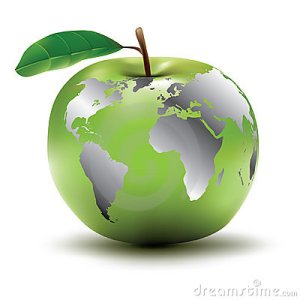 Our present lifestyle it is easy to forget the importance of our natural resources We need the air, water, soil, plants, and animal to quite frankly stay alive, and so it’s important to use them properly and sustainably. Here is an activity to demonstrate the importance of soil, which provides food for billions of us and other land based species.
Our present lifestyle it is easy to forget the importance of our natural resources We need the air, water, soil, plants, and animal to quite frankly stay alive, and so it’s important to use them properly and sustainably. Here is an activity to demonstrate the importance of soil, which provides food for billions of us and other land based species.
Hold up an apple and consider it to be the earth. Take a knife and cut the earth into quarters. Set aside 3 of the quarters. These represent the oceans, which leaves the remaining quarter to be the total land area of the earth.
Slice this land quarter in half, and set aside one of them. This represents land that is inhospitable to people: the Polar Regions, deserts, swamps, and high rocky, mountainous areas. The remaining 1/8 of the earth is the land area where people can live.
Cut the remaining 1/8 piece of the earth into 4 equal pieces, and set aside 3 of them. These represent land that can’t grow food because it is too rocky, too wet or dry, too cold or hot, too steep, or just has poor soil. It also includes land that could grow food but is covered with cities, roads, shopping centers, etc.
That leaves you with a little 1/32nd piece of the Earth apple. Carefully peel this piece. This tiny peel represents the surface, the very thin skin of soil on which mankind depends. It is less than 5 feet deep, and we’re losing billions of tons of it each year to erosion and development.
Advanced agricultural technology has enabled the world to feed most of its people. But with a fixed land resource base and an ever-growing population trying to feed, each person’s portion of soil is growing smaller and even more important.
The moral of the story: don’t take dirt for granted, and support and carry out conservation practices that don’t deplete our soil, water, air, and other needed resources. Something as simple as recycling some of your trash or planting a tree to shade your house makes a difference. For information on conservation practices for farms or homes, contact your local County Extension Agent or Natural Resources Conservation Service for forest related practices contact your local state forestry office

